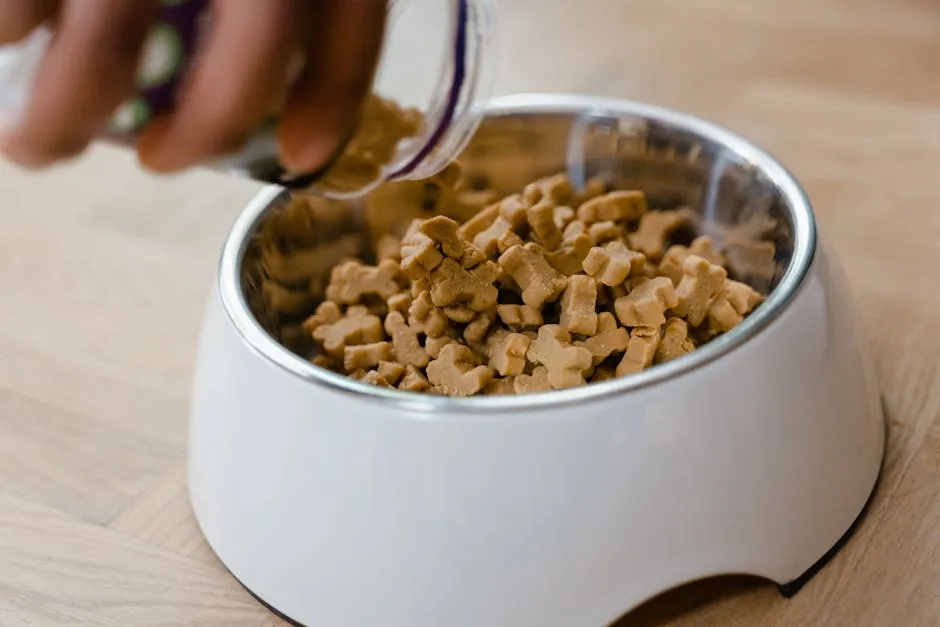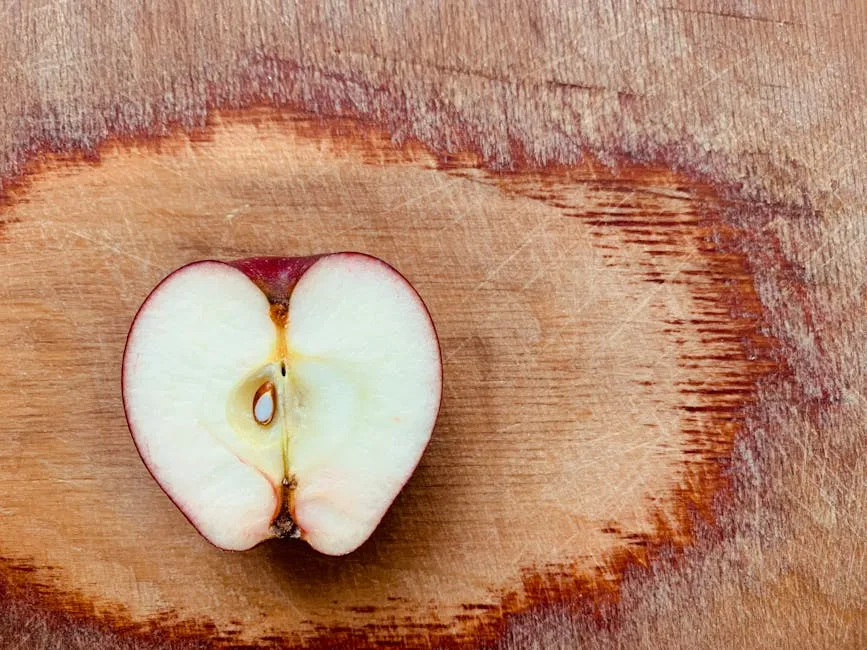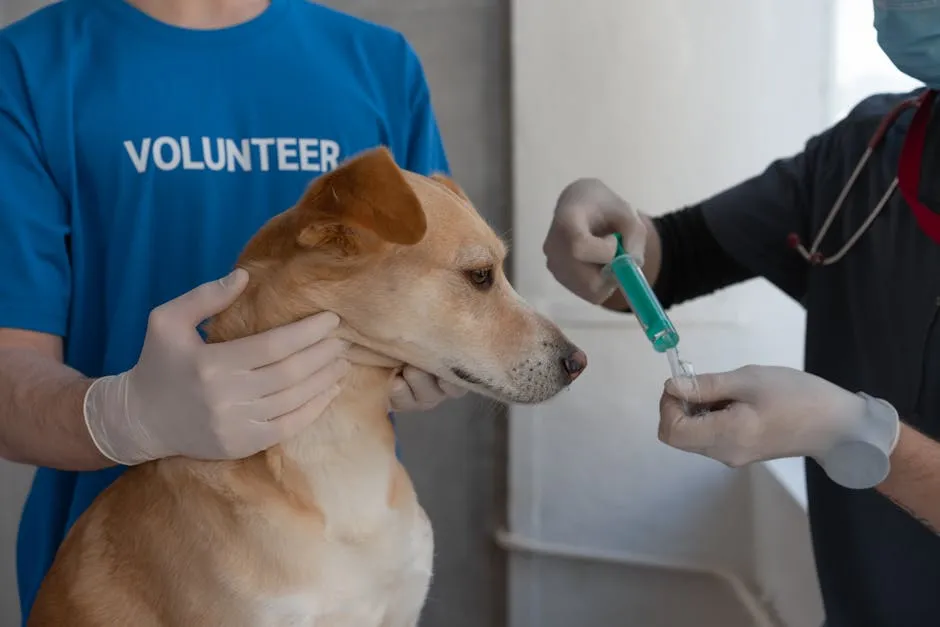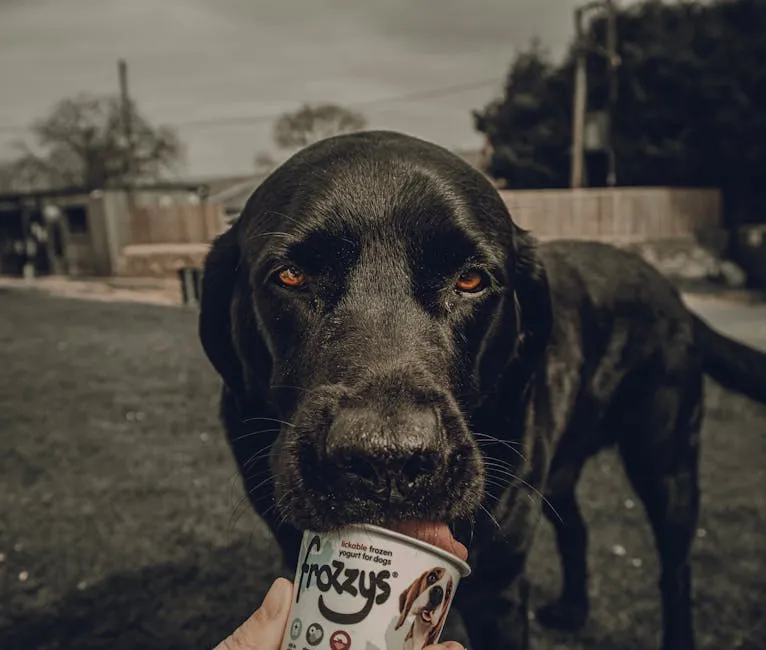Introduction
“An apple a day keeps the doctor away!” But can it keep the vet away for our furry friends? As pet owners, we often wonder about the safety of sharing our favorite snacks with our dogs. The trend of exploring human foods for canine companions is on the rise. However, before tossing your pup a slice of your juicy apple, let’s hit the brakes for a moment!
While apples are a delightful snack, they come with a few precautions. Can dogs safely eat apples? This question has been on many pet parents’ minds. It’s vital to understand the benefits and risks of this crunchy fruit. So, let’s unravel the mystery together!
First, it’s good to know that apples are not only safe for dogs but can also provide a range of health benefits. Rich in vitamins and fiber, they can be a tasty addition to your dog’s diet. However, caution is necessary. Not every part of an apple is dog-friendly. Seeds, cores, and stems can pose risks, so preparation is key. If you’re looking to make those apple slices even more appealing for your pup, consider using an apple slicer. It makes slicing quick and easy, ensuring those treats are perfectly sized for your furry friend!
In this guide, we’ll answer the burning question: can dogs eat apples? We’ll explore the benefits of apples, the best ways to serve them, and the important precautions every dog owner should know. Buckle up, and let’s get to the core of the matter!

Summary
Yes, dogs can eat apples, but moderation is key. These sweet fruits offer several benefits, including essential vitamins and fiber. However, always remember to remove the seeds, cores, and stems before sharing.
Feeding sizes vary based on dog size. For small dogs, just a slice or two is ideal, whereas larger breeds can enjoy more. Alternatives like applesauce or plain apple slices can be great treats as well. If you’re interested in making homemade applesauce, consider using an applesauce maker. It’s a fantastic way to whip up a batch of dog-friendly treats!
While apples come with many benefits, potential risks exist, especially from seeds. Understanding how to serve apples creatively can make snack time fun and safe for your dog. Let’s keep those tails wagging while ensuring our furry friends enjoy their snacks safely!

Specific Health Benefits
Apples aren’t just a snack; they’re a health boost! First up, let’s talk digestion. Apples are rich in dietary fiber. This fiber helps keep your dog’s digestive system running smoothly. It’s like a gentle broom for their intestines, sweeping away any unwanted debris. When your pup munches on apple slices, they’re also hydrating themselves. Apples are about 86% water, which can aid digestion and keep your furry friend refreshed.
Now, on to dental health. Chewing on crunchy apples can help reduce plaque and tartar buildup. The fibrous texture of the apple skin works like a natural toothbrush, promoting cleaner teeth and fresher breath. So, it’s a win-win: your dog enjoys a tasty treat, and you enjoy fewer vet visits for dental issues!
Let’s not forget antioxidants! These little warriors help neutralize harmful free radicals in your dog’s body. Apples are packed with vitamin C and other antioxidants that fight inflammation. This can be especially beneficial for older dogs, as it may support joint health and overall well-being. Just think of apples as nature’s multivitamin for your pup!

Safety Precautions
Toxic Parts of the Apple
Before you toss your dog a slice of apple, hold your horses! Not all parts of the apple are safe for your furry friend. Apple seeds? They’re trouble! These tiny seeds contain amygdalin, which releases cyanide when chewed. While it takes a lot of seeds to cause harm, it’s best to play it safe. Always remove the seeds before sharing apples with your dog.
Next, let’s talk about apple cores. Sure, they might seem harmless, but they can be a choking hazard. The core is tough and can cause blockages in your dog’s digestive system if swallowed. Always slice apples and remove the cores to keep your pup safe. If you’re worried about keeping your pup hydrated while enjoying apples, consider a pet water bottle. It’s perfect for on-the-go hydration!

Allergies and Sensitivities
Most dogs can enjoy apples without any issues. However, a small number may have allergies or sensitivities. If your dog starts sneezing or develops a rash after snacking on apples, it’s time to consult your vet. Allergic reactions can be serious, so it’s better to be safe than sorry! Look out for symptoms like itching, swelling, or digestive upset. If you notice anything unusual, take action and get your dog checked out.

How to Serve Apples to Your Dog
Preparation Steps
Serving apples to your dog is simple! Start by washing the apple thoroughly. This helps remove any pesticides or dirt. Once it’s clean, it’s time to slice! Cut the apple into small pieces, making sure they’re manageable for your pup. Aim for bites that are about half an inch wide.
Don’t forget to remove the core and seeds! This ensures your dog enjoys the apple safely. Serving sizes should vary based on your dog’s size. A small dog might only need one or two slices, while larger breeds can handle a few more. Keep an eye on the serving amount; moderation is key! Treats should never exceed 10% of your dog’s daily caloric intake.
Apples can be a fun treat when prepared correctly. So, get slicing and let your dog enjoy the crunchy goodness! And if you’re thinking of mixing some fun into your dog’s meals, consider a dog food storage container to keep their kibble fresh!

Serving Suggestions
Serving apples to your dog can be a fun and creative experience! Here are some delightful ideas to keep your pup’s taste buds tingling:
- Frozen Treats: Slice apples into bite-sized pieces and freeze them. On a hot day, these icy morsels become a refreshing snack. Your dog will thank you for the coolness!
- Mixed with Dog Food: Add chopped apple slices to your dog’s regular food. This adds a splash of flavor and nutrition. Just make sure the apple pieces are small enough to avoid choking hazards.
- Homemade Applesauce: Create a simple, dog-friendly applesauce. Peel, core, and chop apples, then simmer with a splash of water until soft. Mash it up and let it cool. This tasty treat can be served as a topping or a standalone snack!
- Apple Pops: Blend apples with plain, unsweetened yogurt. Pour the mixture into ice cube trays and freeze. These fruity pops are perfect for summer days!
- Apple Smoothies: Combine apples with dog-safe fruits like bananas and blueberries. Blend with some water or yogurt for a nutritious smoothie. Your dog will love this tasty drink!
- Apple Chews: Dehydrate apple slices for a chewy treat. Just slice, remove seeds, and dry them in a dehydrator or oven on low heat. These chewy bites are great for dental health too! You can even invest in a dehydrator for making apple chews to make your own yummy treats!

How Many Apples Can My Dog Have?
General Guidelines
When it comes to feeding apples to your furry friend, moderation is crucial! Treats, including apples, should not exceed 10% of your dog’s daily caloric intake. This means if your dog requires 500 calories per day, only about 50 calories should come from treats.
Here’s a handy guide based on your dog’s size:
- Extra-small dogs (2-20 lbs.): 1-2 small slices.
- Small dogs (21-30 lbs.): 2-3 slices.
- Medium dogs (31-50 lbs.): 5-6 slices.
- Large dogs (51-90 lbs.): 6-8 slices.
- Extra-large dogs (91+ lbs.): A handful of slices.
Consult your veterinarian if you’re unsure about your dog’s specific needs. And speaking of keeping your dog happy, consider adding some dog treat pouch for easy access to their favorite snacks during training!

Signs of Overfeeding
While apples are a healthy treat, too many can lead to digestive distress. Look out for signs such as diarrhea, vomiting, or an upset stomach. If your dog shows any of these symptoms, reduce the apple intake and consult your vet. Remember, even healthy snacks need to be given in moderation!

Common Myths and Misconceptions
Addressing Myths
There are plenty of myths floating around about dogs and apples. Let’s debunk a few!
- “All fruits are safe for dogs.” Not true! While many fruits are safe, others can be harmful. Always do your research before sharing.
- “Dogs can eat all parts of an apple.” Definitely false! The apple core and seeds contain cyanide, which is toxic in larger amounts. Always remove these parts before serving.
- “If it’s good for me, it’s good for my dog.” This is a slippery slope! Humans can enjoy many foods that dogs can’t. Always consult a vet before introducing new foods.
In conclusion, it’s crucial to educate yourself about what’s safe for your furry friend. Apples can be a delicious and healthy treat when given correctly. So grab those apples and get creative, but keep the core and seeds away from those wagging tails!

Conclusion
In conclusion, apples can be a delightful and nutritious snack for dogs, but moderation is essential. We’ve established that while these crunchy fruits are packed with vitamins and fiber, they also come with some caveats. Always remember to prepare them properly by removing seeds, cores, and stems to ensure your pup’s safety.
It’s crucial to keep serving sizes in check. A few slices will do for most dogs, depending on their size. Treats, including apples, should account for no more than 10% of your dog’s daily caloric intake. Overindulgence can lead to tummy troubles, and nobody wants that! Also, if you want to pamper your dog, consider some delicious apple-flavored dog treats for a special occasion!
Before introducing any new foods into your furry friend’s diet, it’s wise to consult your veterinarian. They can provide personalized advice tailored to your dog’s specific health needs and dietary restrictions. After all, keeping your dog happy and healthy is the goal!

FAQs
Can dogs eat apple seeds?
No, apple seeds should be removed before feeding. They contain a small amount of cyanide, which can be harmful.
What about applesauce?
Plain, unsweetened applesauce is safe for dogs in moderation. Just check for added sugars or harmful ingredients.
Can all dogs eat apples?
Most dogs can enjoy apples, but those with health conditions like diabetes should be monitored closely. Always consult your vet for advice.
What types of apples are best for dogs?
Common varieties like Fuji, Gala, and Granny Smith are generally safe. Organic apples are preferable to avoid pesticides.
Can dogs eat dried apples?
Dried apples can be tricky. They may contain added sugars and preservatives. Fresh apples are the better option for your pup.
Can dogs eat dried apples?
Ah, dried apples! The sweet, chewy snack that tempts us all. But when it comes to our four-legged companions, it’s crucial to tread carefully. While fresh apples are a crunchy delight for dogs, dried apples come with a few hidden surprises.
First off, let’s talk about added sugars. Many dried apple products contain extra sugar to enhance their sweetness. Just like humans, dogs don’t need a sugar rush. Too much sugar can lead to obesity and diabetes in our furry friends. A little sweetness is fine, but a lot? Not so much!
Next, preservatives often sneak into the ingredient list. These additives help improve shelf life but can be tough on your pup’s tummy. Dogs are sensitive creatures, and their digestive systems can react poorly to unfamiliar ingredients. You wouldn’t want your dog to feel like they’ve eaten a brick, right?
So, what’s the verdict? Fresh apples are the clear winner here. They’re naturally sweet, hydrating, and packed with nutrients. If you want to treat your dog, stick to fresh slices. They’re easier on the belly and far more nutritious. If you’re set on giving dried apples, check the label first. Choose options without added sugars or preservatives to keep snack time safe and healthy. And for those moments when your pup might need a little extra care, consider a pet first aid kit to be prepared for any situation!

In summary, while dried apples can be a tempting treat, fresh apples are the best choice for your pup. Keep those tails wagging with wholesome goodness!
Please let us know what you think about our content by leaving a comment down below!
Thank you for reading till here 🙂
All images from Pexels





